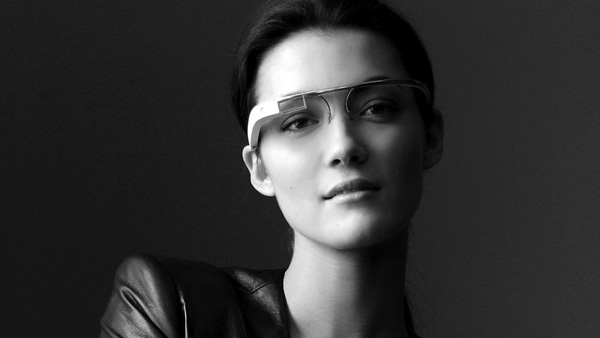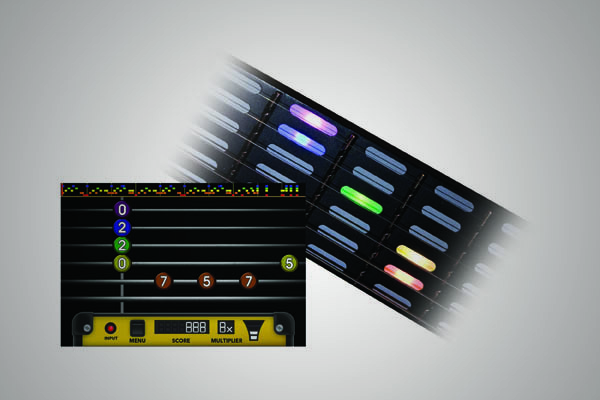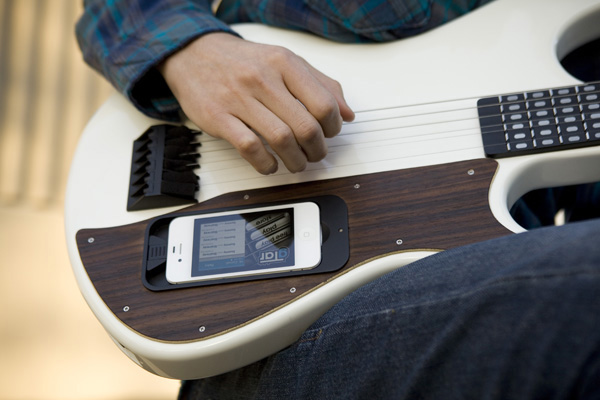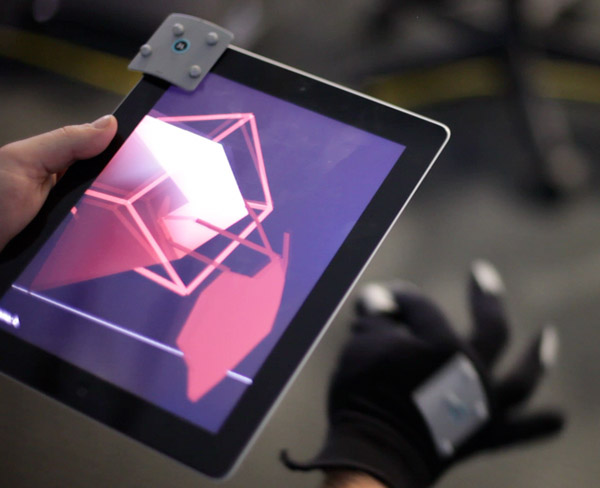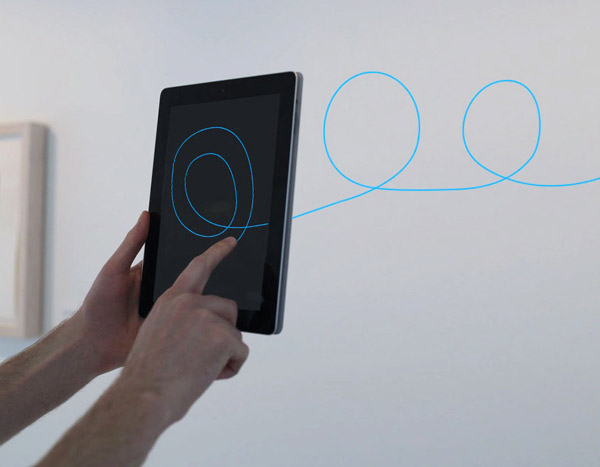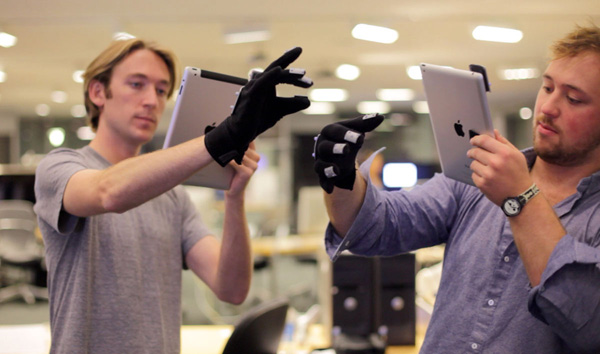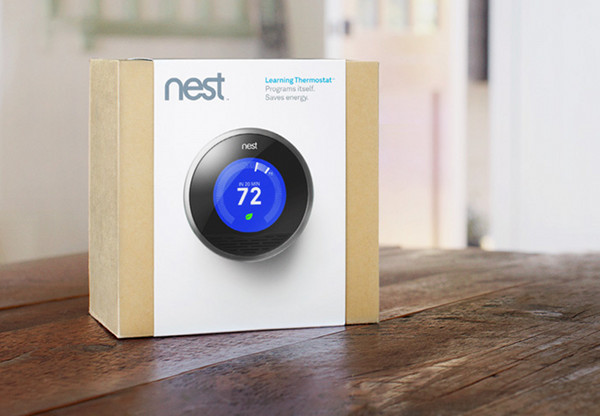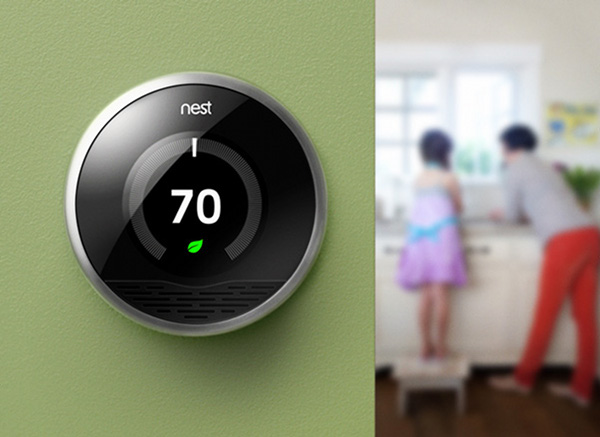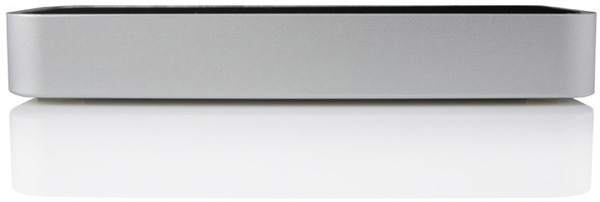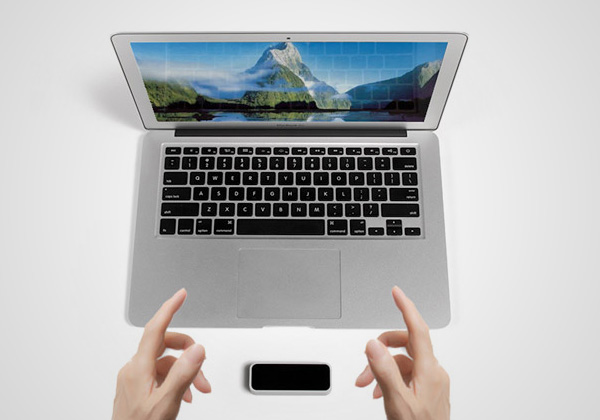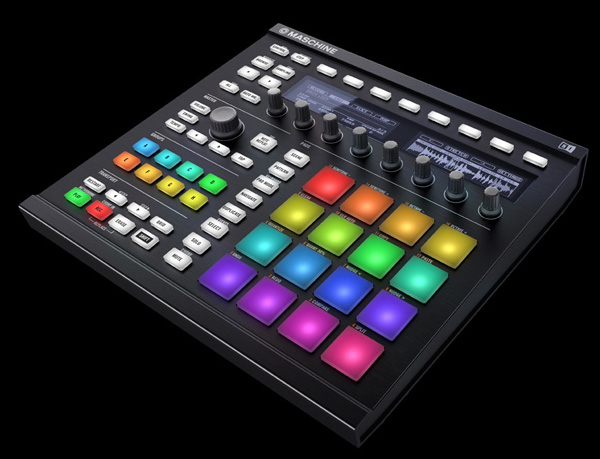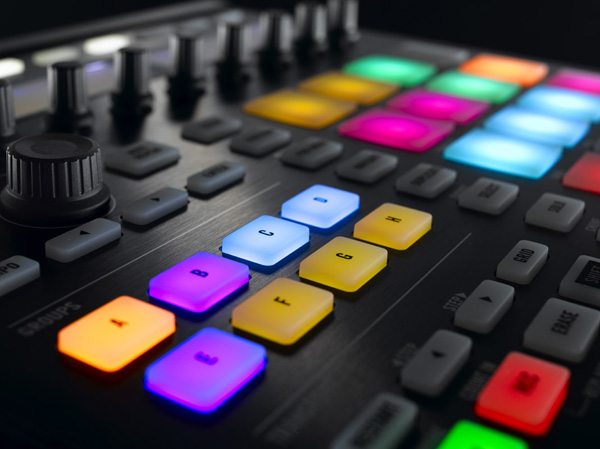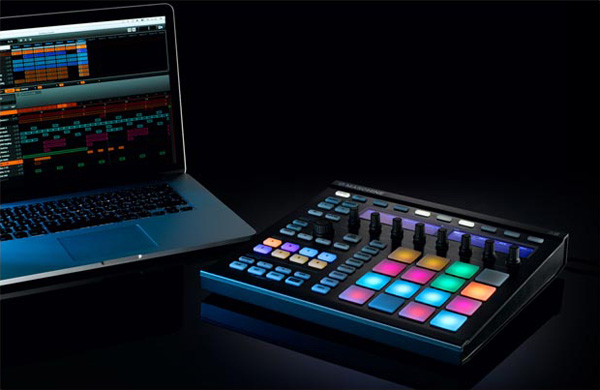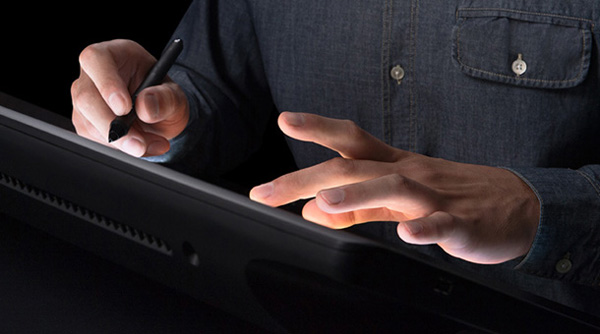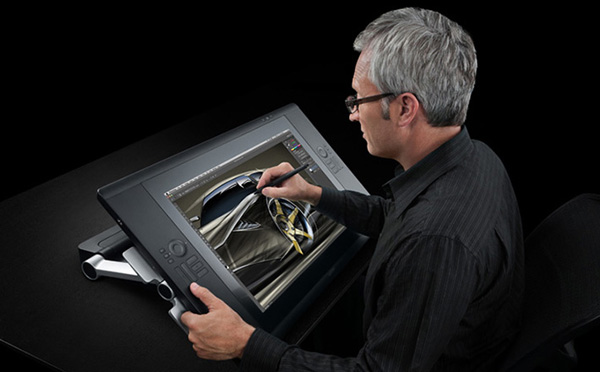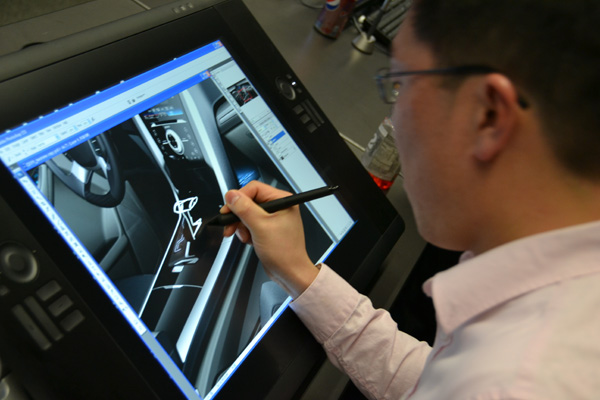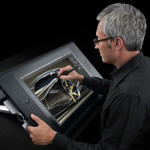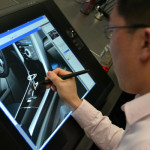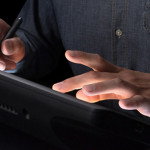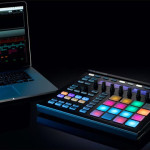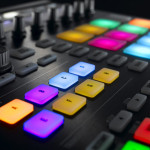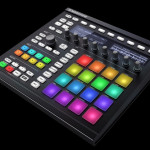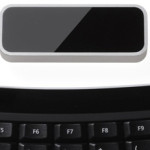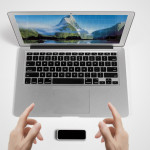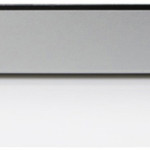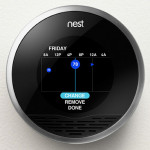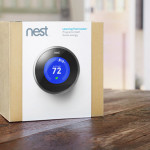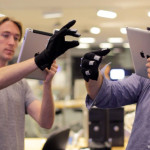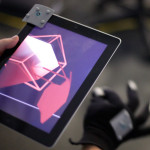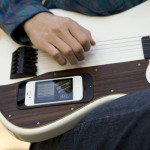Wacom Cintiq Tablet Display
In 2007, the industry-leading pen tablet manufacturer Wacom revealed a new device that put the “pen to the paper” in a digital medium. The Wacom Cintiq Tablet Display gave designers and illustrators the power to digitally draw directly on their subject, re-connecting the hand to the medium. Prior to this product, a visual artist would need to use a mouse or an off-screen tablet to illustrate an image on a separate display, which can be a clumsy undertaking for a traditionally-disciplined designer. While there have been many touch-enabled technology revolutions over the last decade, especially the multi-touch iPhone 1, the Wacom Cintiq is especially relevant for the way visual creatives interact with their image. The technology may still be costly, but it’s value is undeniable. It’s important to note how “full-circle” this is for the evolution of digital design. The above shot shows an automotive stylist at Ford Motor Company’s headquarters in Dearborn, Michigan working on the interior design of a new vehicle in 2012. Standing next to me when I took this shot was my 74-year-old father, Phillip E. Payne, who designed vehicles in this exact location nearly 50 years ago. His process was to illustrate a collection of detailed, stylized vehicle concepts on large poster boards to show to the design executives. They’d pick and choose elements they liked and he’d literally go back to the drawing board to incorporate them in his next sketches. The designer above uses the Wacom Cintiq system to create his illustration as if it were directly on paper, but when the changes are requested, he can make them on the fly in this digital medium. Wacom Cintiq Tablet Display Gallery View in gallery View in gallery View in gallery
Native Instruments Maschine Music Controller
The marriage of music and computer has been decades strong, but its evolution continues today. After complicated, costly systems were the first to give musicians a digital creative outlet, the new tools are streamlined, inexpensive and powerful. A solid representation of the latest digital music interfaces is the Native Instruments Maschine. This system is one part hardware, one part software with a USB connection that combines the two. It takes the pad-style control system of 90s era drum machines, an array of knobs and buttons for modern digital sequence management and adds a healthy dose of fun. A decade ago, a musician would have needed to purchase a MIDI interface, some sequencing software, a synthesizer, a sampler and a pricey control surface just to do what Maschine does for a few hundred bucks. While there are some greater and more expensive systems still available today, Maschine might be the Fender guitar of its time– arming the next generation with the tools to craft music without breaking the bank. Above, a friend of TheCoolist (and fellow Detroit native) Jeremy Ellis shows just how expressive a digital tool can be. Purists may try to suggest that a digital tool like this kills the need for musicianship, but Jeremy Ellis knocks that argument dead one pad-stroke at a time. Native Instruments Maschine Gallery View in gallery View in gallery View in gallery
Leap Motion Interface
The Leap Motion Interface represents the most dynamic, high resolution gesture control system on the market today. It is the developmental successor of products like the Xbox Kinect, but it is soon-to-be available at a lower price point and a higher level of precision. Furthermore, unlike the gesture control systems that came before, the Leap Motion interface is not tied to a specific system, it can be used on a variety of pc platforms. It is currently available for pre-order directly from Leap Motion for only $70, $30 less than the stand-alone price of a Kinect unit. The video above shows a variety of uses for Leap Motion, and just how precise its feedback is. Leap Motion Interface Gallery View in gallery View in gallery View in gallery
Nest Energy Efficient Thermostat
Can a thermostat really be revolutionary? Thanks to its stunning simplicity and immense level of control, the Nest Energy Efficient Thermostat certainly can. It doesn’t hurt that it was designed by the creator of another revolutionary gadget, Tony Fadell, the designer of the Apple iPod. The Nest thermostat promises to save around $500 per year on home heating/cooling costs thanks to an intuitive and involved climate management system. Nest adjusts to your habits– when your home is empty for the day, Nest shuts down your heating/cooling systems. 20 minutes or so before your arrival, Nest powers up and makes your home comfortable before your arrival. Getting home late or taking an impromptu trip? Hop on your mobile app or iPad and tell Nest that you won’t need a warm house for a few days. The control between the mobile app system and Nest itself, which responds to twists and gestures, make this a revolutionary way that we humans interact with our climate at home. It’s not the first smart thermostat, but so far, it may very well be the best. Nest Energy Efficient Thermostat Gallery View in gallery View in gallery View in gallery
MIT T(ether) Spacial Expression Tool
On the more conceptual side of things, the good people of MIT have developed a “spacial expression tool” they call T(ether). It’s a 3-dimensional object creation and manipulation tool that uses an iPad-mounted sensor and a control glove to interact with virtual, 3D objects. The iPad’s display is a window into a 3D world, and the touchscreen, accelerometer and glove act as ways to interact with that world. Walk backwards while drawing circles on the iPad screen, and you’ll see that you’re creating a corkscrew of loops that extend into space. Pick up the glove in your right hand, and you can alter and adjust the images you create in a variety of ways. It really must be seen to be believed, and this video is a great example. While it may not have a practical application yet, it represents an advancement in the way we interact with virtual environments, something will find new uses in our future. MIT Tether Spacial Expression Tool Gallery View in gallery View in gallery View in gallery
gTar iPhone-based Guitar Education Instrument
Since the days of the lute, and possibly longer, humanity has interacted with sound on a series of strings over an acoustically resonant body of wood. In the last century, electricity amplified this sound from strings for a revolution that created a new style of modern music. Today, the gTar iPhone-based Guitar Education Instrument connects the guitar and the musician with a new way of understanding musical performance. The gTar docks with an iPhone and employs an app that teaches a musician how to play their favorite songs. The app uses lights on the guitar’s fretboard to display fingering patterns for a given song. The guitarist can follow these lights in progressively more involved patterns until the song is fully learned and understood. It’s a new kind of teaching tool, and a new way for a musician to interact with her instrument and the digital environment beyond. gTar iPhone-based Guitar Gallery View in gallery View in gallery View in gallery
Google Project Glass Visual Interface
Google’s Project Glass may be one of the most well known new technologies to be revealed in the current calendar year. While Google Glass is still just a prototype, it promises to revolutionize the way humans interact with their digital environment and the physical environment around them. Using Google systems like Maps, Google+, Calendar, Mail and Hangouts, Google Glasses let us see what is happening in our digital world and vice versa. The above video shows what a day with Google Glass would be like, and how our digital and physical routines would merge. Just pop on a pair of Google Glasses, and everything around you is digitally-connected in many ways. Google Project Glass Gallery View in gallery View in gallery View in gallery – – – – – – – – – – – There are many more modern technologies that impact the way we interact with our digital environment and eachother. Is there a special piece of technology that you use that you think should be on this list? Share with us in the comments below or share on twitter @thecoolist. Thanks for reading, and be sure to share this with your like-minding, technophile friends– just like us, they wouldn’t want to miss it.
